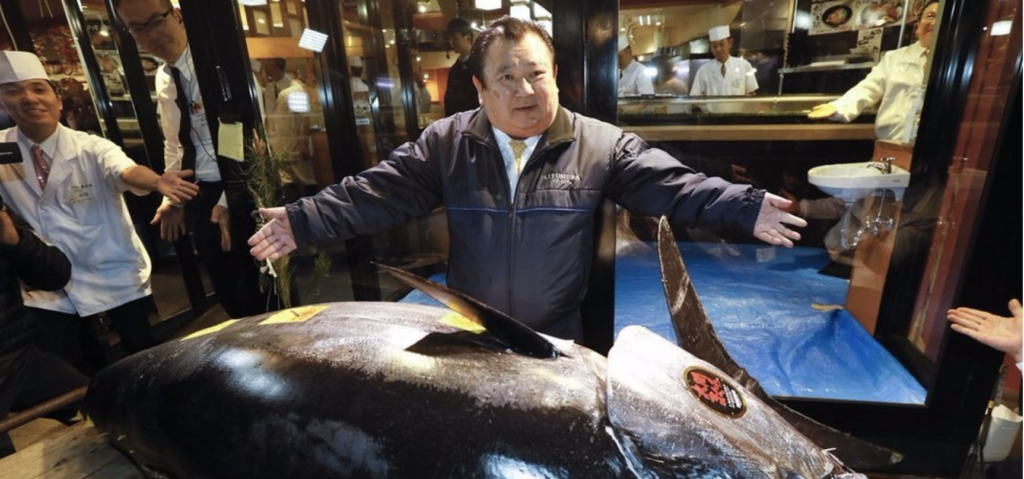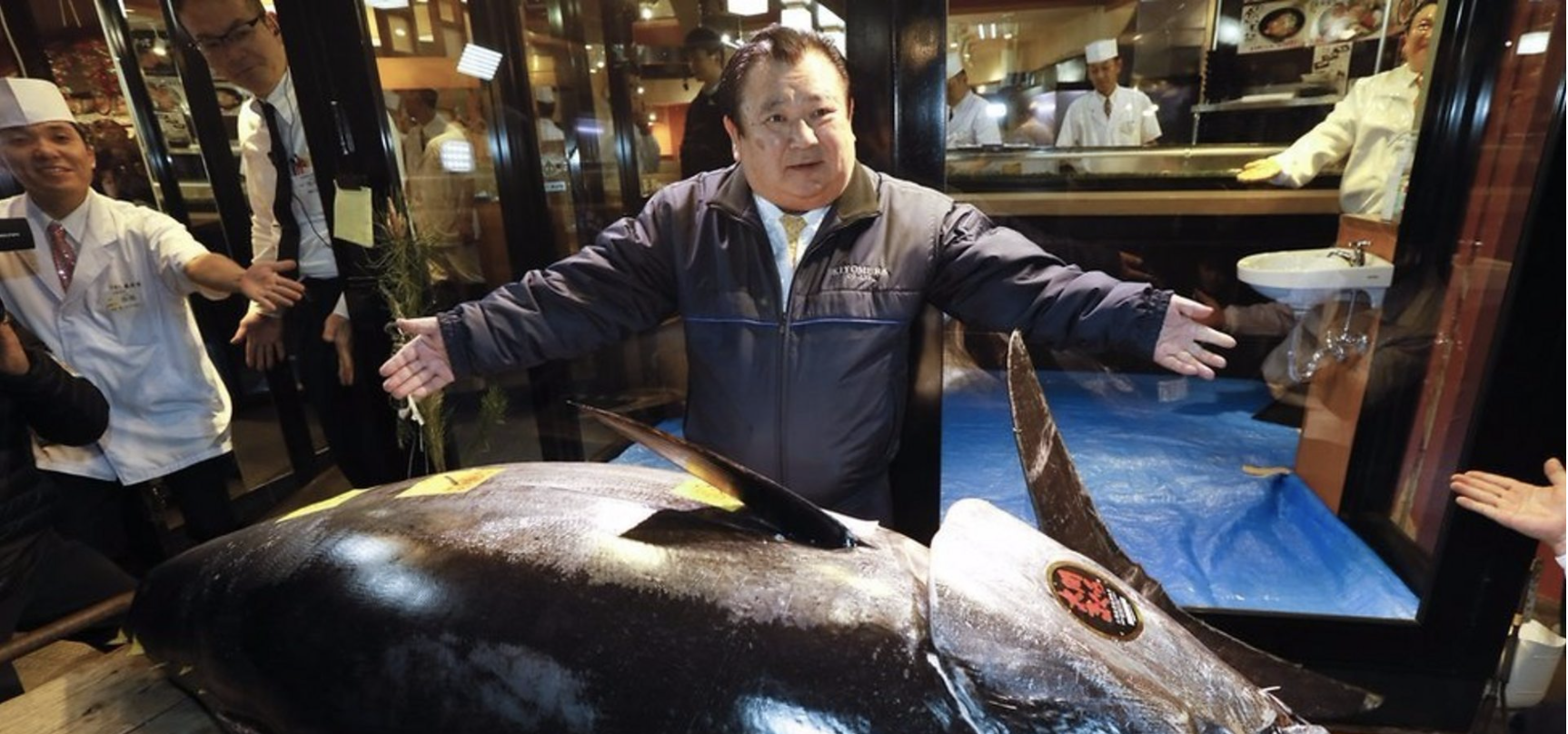Recent analysis suggests there is still much work to be done
Bluefin tuna are one of the ocean’s top predators. On average, they will measure anywhere from six to eight feet in length, and can weigh around 500 lbs. Designed for speed, they are built like torpedoes and can retract their dorsal and pectoral fins, allowing them to reach speeds up to 18 miles per hour. Female bluefin lay up to 10 million eggs a year, and have very few natural predators. These factors combined should allow Bluefin tuna to thrive in the oceans they inhabit. So how is it that, until recently, they were in danger of collapsing as a species? The cause, like the cause of so many other ecological disasters, is human interference. In this case, in the form of extreme overfishing.
Overfishing is when fish are taken out of the water at a rate faster than the species can reproduce itself. Over time, this causes the population of fish to decline. While billions of people across the world rely on fish for food, overfishing can have drastic consequences for the ecosystem. The sudden decline of a population of fish creates imbalances in the ocean’s food web, leading to the subsequent decline of other species, especially marine life that is already at risk (1). Marine animals that feed on Bluefin, such as Orcas, could starve. Furthermore, the organisms that the Bluefin themselves feed on would grow in number, which would lead to overconsumption of their prey and possibly the collapse of several marine populations.
Overfishing first began in the 1800s, when whales were hunted at extreme rates for their highly valuable blubber. In the mid-20th century, other fish species began to be overfished as well. An international effort to make protein rich foods more plentiful and affordable created an industrialized fishing operation. Profit motivated, this operation became extremely aggressive, employing new technologies to catch fish en masse (2). For Bluefin, these new technologies, in combination with other factors, meant impending disaster.
However, technology alone isn’t responsible for the overfishing of a species, it merely aids in the process. Prior to the 1970s, Bluefin tuna had been responsibly fished for centuries, without any serious drop in population due to the low demand for the fish at the time. Even in Japan, where seafood is incredibly popular, the fish didn’t gain any traction as a dish, due to it being much redder, bloodier, and smellier than the fish that was being consumed at the time (3). Low demand meant low prices, which meant that there were few motives to fish for, or buy, Bluefin tuna. That all changed following World War II. Cultural exchange with America led to an increase in popularity of fatty meat, such as beef or Tuna, in Japan. The Japanese taste for Bluefin increased dramatically, and the prices and demand followed suit. Between the 1970s and 1990s, fishing for bluefin in the Western Atlantic increased by over 2,000% (3).

By the time people started to take serious notice of the problem, it was almost too late. At their worst point, the stocks of Bluefin tuna were down to just 2.6% of their original numbers, and had been in danger of collapse far before that (4). Luckily for the tuna, nonprofits and countries finally began to take meaningful action. In 2007, the International Commission for the Conservation of Atlantic Tunas created a 15 year recovery plan that lowered the amount of tuna legally catchable, and prohibited certain technologies that made catching the fish easier, such as the use of aircraft to detect tuna schools (5).
Another important measure was taken in 2017, when the Western and Central Pacific Fisheries Commission and the Inter-American Tropical Tuna Commission, who together presided over the fishing of Pacific bluefin, created parameters for the fishing of the species. They agreed to establish catch limits, the amount of the fish that could be legally caught, on a year-by-year basis, and base them on how well the fish population was recovering. They also began to crack down harder on illegal fishing operations. The long-term goal of this agreement was to have the stocks of Pacific Bluefin tuna increase by 20% by the year 2034 (6). Countries began to play a part in the species recovery as well, with even Japan lowering its catch totals to meet the new restrictions, despite being the largest contributor to the problem in the past (7).

Luckily for the Bluefin tuna population, the combined efforts of countries and organizations across the world have allowed it to recover, at least partially. The 2020 stock assessment for Atlantic Bluefin shows that they are no longer overfished, and have also been given the endangerment status of ‘least concern’.
While the population for Pacific bluefin has reportedly been increasing, they still maintain a ‘vulnerable’ status. Some countries, like Japan, ignore this distinction and are using the increased number of tuna to push for an increase in the catch quota of the fish. However, despite the growth, the stocks of bluefin tuna are still only a fraction of what they were prior to overfishing. In the case of the Atlantic Bluefin, their recovery has taken a turn for the worse. They are listed as endangered, and their population isn’t increasing. In fact, it’s dropping due to a prematurely increased catch quota, a sign of what could happen if Japan successfully raises the catch limit on Pacific Bluefin. (8). Similar to the Atlantic Bluefin, Southern Bluefin are still listed as critically endangered, with their population decreasing.
These assessments might at first seem disheartening, but they should serve as a reminder that the job isn’t finished. Efforts still need to be made in order to replenish the numbers of these fish. Catch quotas should not be raised until the fish stock is healthy enough to handle it. While there have certainly been steps taken in the right direction, they are only the first few strides of a long journey towards recovery.
Citations
1- Overfishing. (2021). Retrieved September 19, 2021, from World Wildlife Fund website: https://www.worldwildlife.org/threats/overfishing
2- Overfishing-Plenty of Fish in the Sea? Not Always. (2010, April 27). Retrieved September 20, 2021, from National Geographic website: https://www.nationalgeographic.com/environment/article/critical-issues-overfishing
3- ahlee20. (2018). ahlee20 – Global Food, Health, and Society. Retrieved September 20, 2021, from https://web.colby.edu/st297-global18/author/ahlee20/
4- Nickson, A. (2016, April 25). New Science Puts Decline of Pacific Bluefin at 97.4 Percent. PEW Trusts. Retrieved September 20, 2021, from Pewtrusts.org website: https://www.pewtrusts.org/en/research-and-analysis/articles/2016/04/25/new-science-puts-decline-of-pacific-bluefin-at-974-percent
5- Recent history of bluefin tuna (2013). Marine Stewardship Council. Retrieved September 20, 2021, from Msc.org website: https://www.msc.org/species/tuna/recent-history-of-bluefin-tuna
6- Leschin-Hoar, C. (2017, September 1). Countries Pledge To Recover Dwindling Pacific Bluefin Tuna Population. NPR. Retrieved September 20, 2021, from NPR.org website: https://www.npr.org/sections/thesalt/2017/09/01/547903557/countries-pledge-to-recover-dwindling-pacific-bluefin-tuna-population
7- Historical trends of tuna catches in the world. (2021). Food and Agriculture Organization. Retrieved September 20, 2021, from Fao.org website: http://www.fao.org/3/y5428e/y5428e00.htm#Contents 8- Galland, G. (2020, October 29). To Slow Decline of Western Atlantic Bluefin Tuna, Fishery Managers Must Lower Quota. PEW Trusts. Retrieved October 17, 2021, from https://www.pewtrusts.org/en/research-and-analysis/articles/2020/10/29/to-slow-decline-of-western-atlantic-bluefin-tuna-fishery-managers-must-lower-quota

